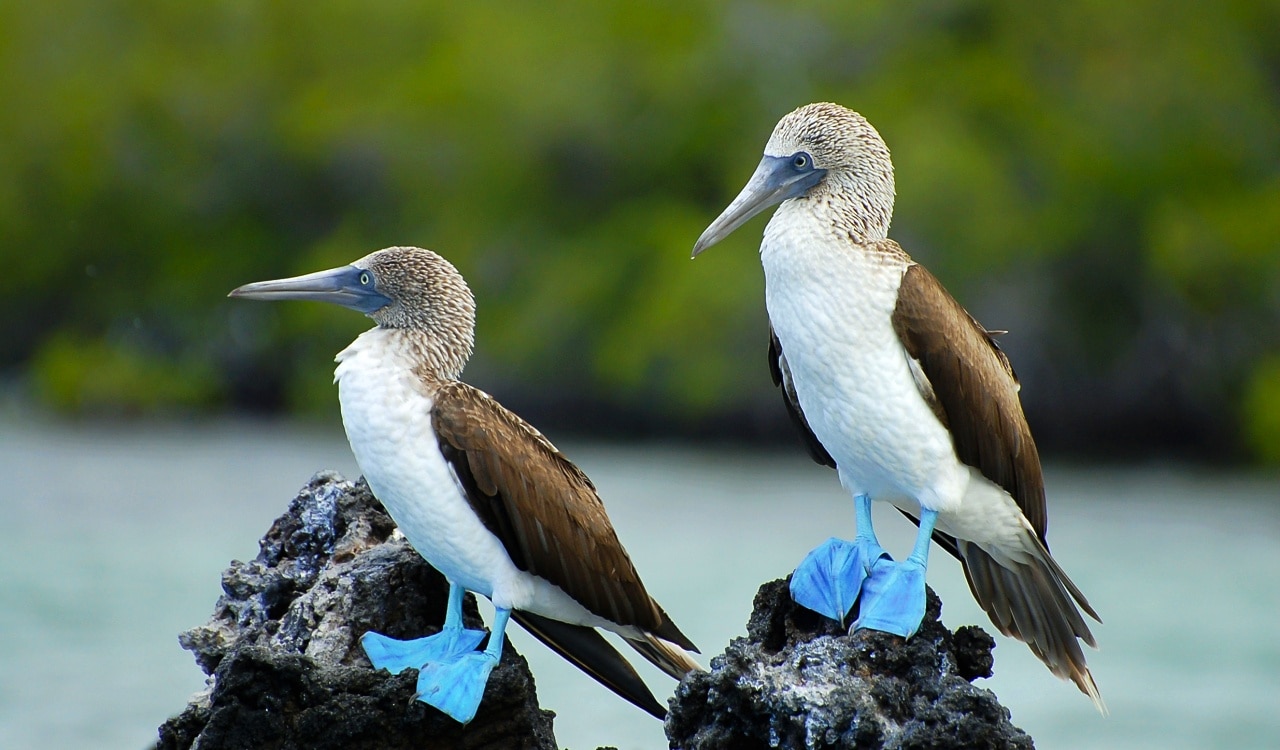While we cannot speak for other worlds, we feel we can state that the Earth has seen some amazing animals. Some might not seem special but add a lot to our ecosystem. However, every so often, you see something incredible. This is where the most unique animals in history come into play. While they were certainly important to their local ecosystem, they also appear to be something you’d have to dream up.
Of course, there are some unique-looking hybrid species. The mule is famously seen all over the world and happens to be a hybrid species. Other hybrids were forced and created unique offspring but many had health issues. Others were a product of evolution around them. Finally, some have no explanation for how they came to be. The most unique animals discovered are all amazing, so let’s get started discussing them below.

Ligers
- Discovered: 19th Century
- Location: All In Captivity
Ligers are hybrid predatory cats that are a cross between a male lion and a female tiger. The species differs from the Tigon, which comes from a male tiger and lioness. Ligers are one of the most unique animals on the planet mostly due to a few key factors. First, the hybrid nature of the species is uncommon to see in the wild. You’ll rarely ever see lions and tigers coming across one another, as lions are often found in Africa while tigers tend to be in Asia. This is why all ligers are found in zoos or conservation centers.
They are almost always the product of forced mating between lions and tigers, but some are accidental. The species technically goes back to the early 19th century in India. Yet they popped up in other zoos across the planet. In the 2010s, a hybrid movement led to a rise in liger births, however. Ligers also happen to be the single largest predatory cat to ever live, which is distinct but makes them poor predators. They are relatively bulky like tigers while being tall like lions. This is why they likely could not last long in the wild. In spite of the issues they face, ligers are beautiful creatures and well worth checking out.
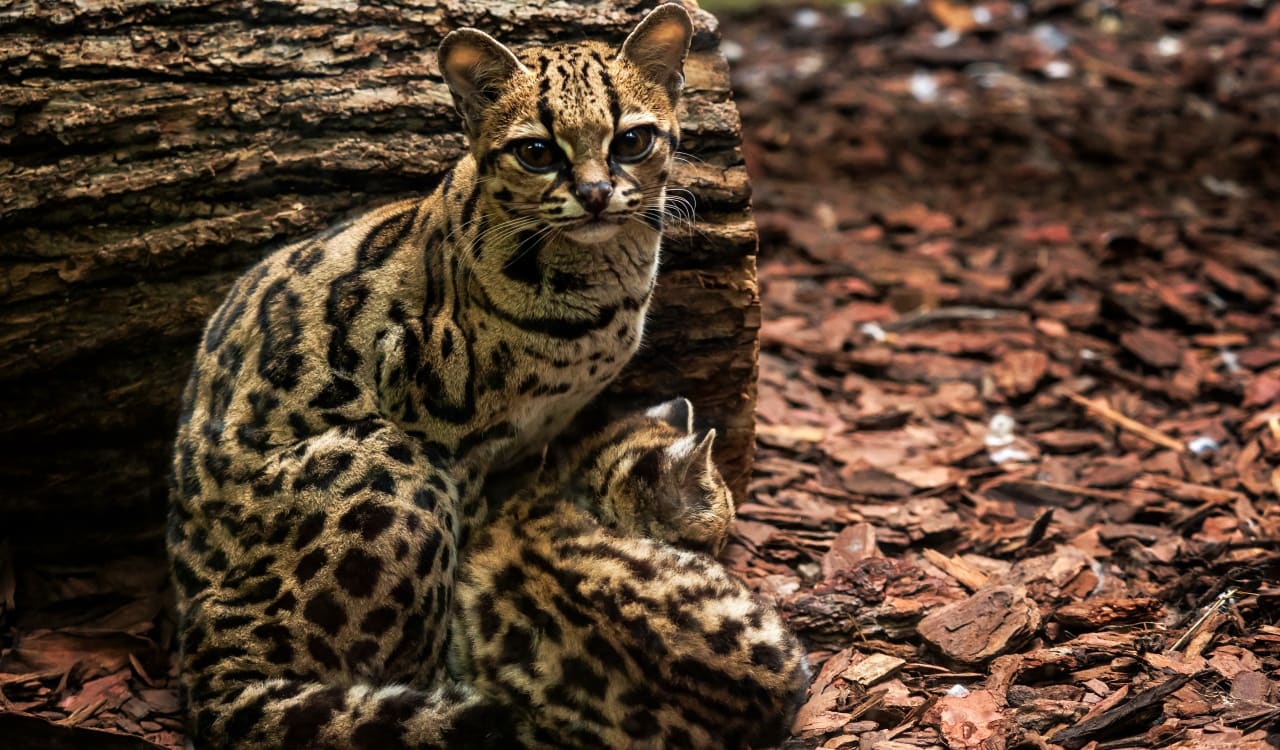
Margays
- Discovered: 1821
- Location: Central & South America
We have covered most of the predatory cats and certainly most of the Panthera family on Science Sensei in the past. Thus, we have covered the Margay species several times. It never gets easier to tell you that the creature is endangered. This is due to the fact that they have been part of the illegal wildlife trade for decades. They were hunted massively up until the 1990s, but due to the lower population, they are not killed off as often.
The struggle of this cat is that it is nocturnal and usually a loner. Without being in social packs, the margay is not going to mate as often. Especially if there is a lower population of male or female cats in a specific area. They are one of the most unique animals in the world due to their appearance. They look like small leopards but they are around the size of a modern house cat you see all the time domestically. However, they don’t just prey on birds but also on some monkeys and large lizards. Margays can easily take down something twice its size, which is pretty impressive for something so small.
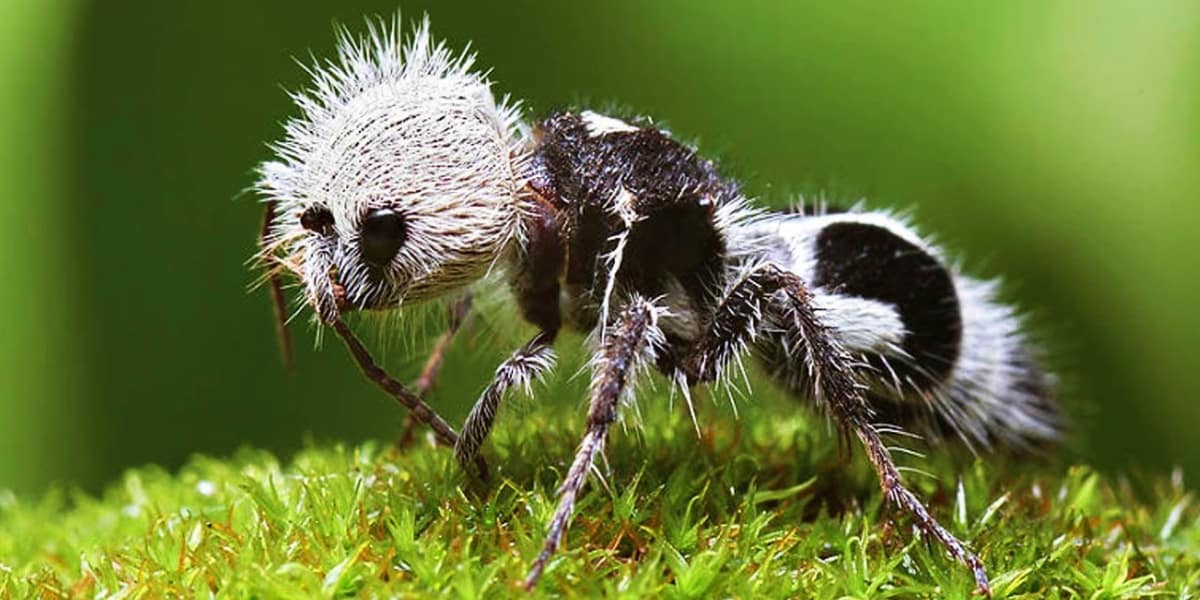
Panda Ant
- Discovered: 1938
- Location: Portions Of South America
While it might be obvious, the Panda Ant is not related to the panda bears in captivity or in the wild. This species gets its name 100% from the way it looks. On top of that, it isn’t even an ant. The species is actually a type of wasp, but the females happen to be wingless. The Panda Ant species is one of the most unique animals ever, especially among the insect community. While the color is unique on its own, the coloring is actually a defense mechanism.
Most species recognize and leave various animals alone due to the way they look. Due to its white and black appearance, the Panda Ant is giving the warning that it has a powerful, painful sting. As an extra layer of defense, they produce an unusually strong ultrasonic sound that can be heard by most animals. In fact, most humans can even hear it. Females actually lay their eggs into host brood cells, and several can sprout up. Yet upon reaching maturity, the species become solitary.
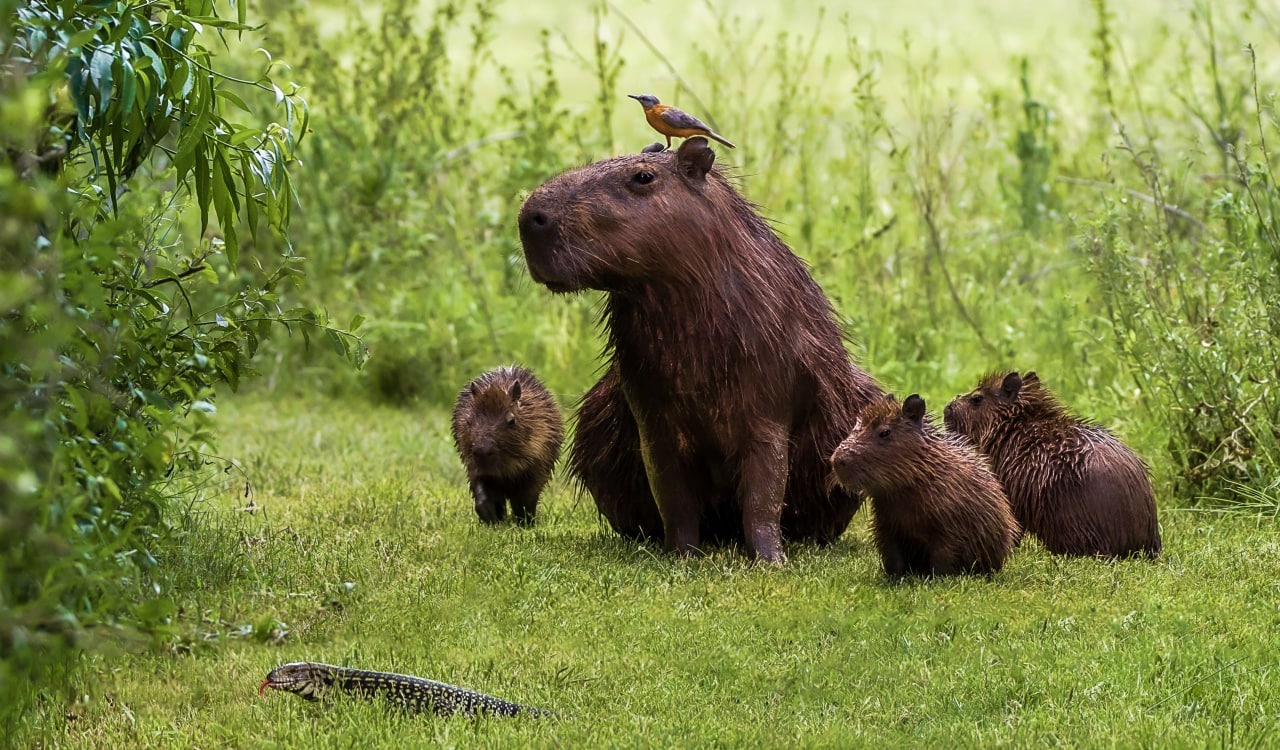
Capybara
- Discovered: Late 1700s
- Location: South America
When it comes to rodents, the Capybara happens to be the king. The species is the largest rodent on the planet today. Many weigh in over 100 pounds and stand as high as the average domestic dog. At first sight, you might not see any rodent-like qualities. They somewhat favor hamsters, but they most certainly have more in common with guinea pigs. This is not shocking to see, as guinea pigs come from the same area in the world. No, not Guinea but South America.
Capybaras are native to a large portion of South America, nearly all of the central and eastern portions. The species is highly social, which might explain why they tend to travel in relatively large packs. It might also explain why they tend to be alright with humans around them. Even wild capybara have allowed humans to pet them. As long as they are not threatened, the species is pretty tame. Capybaras were once hunted tremendously, causing them to nearly be endangered. Overall, they are clearly one of the most unique animals you could ever see.
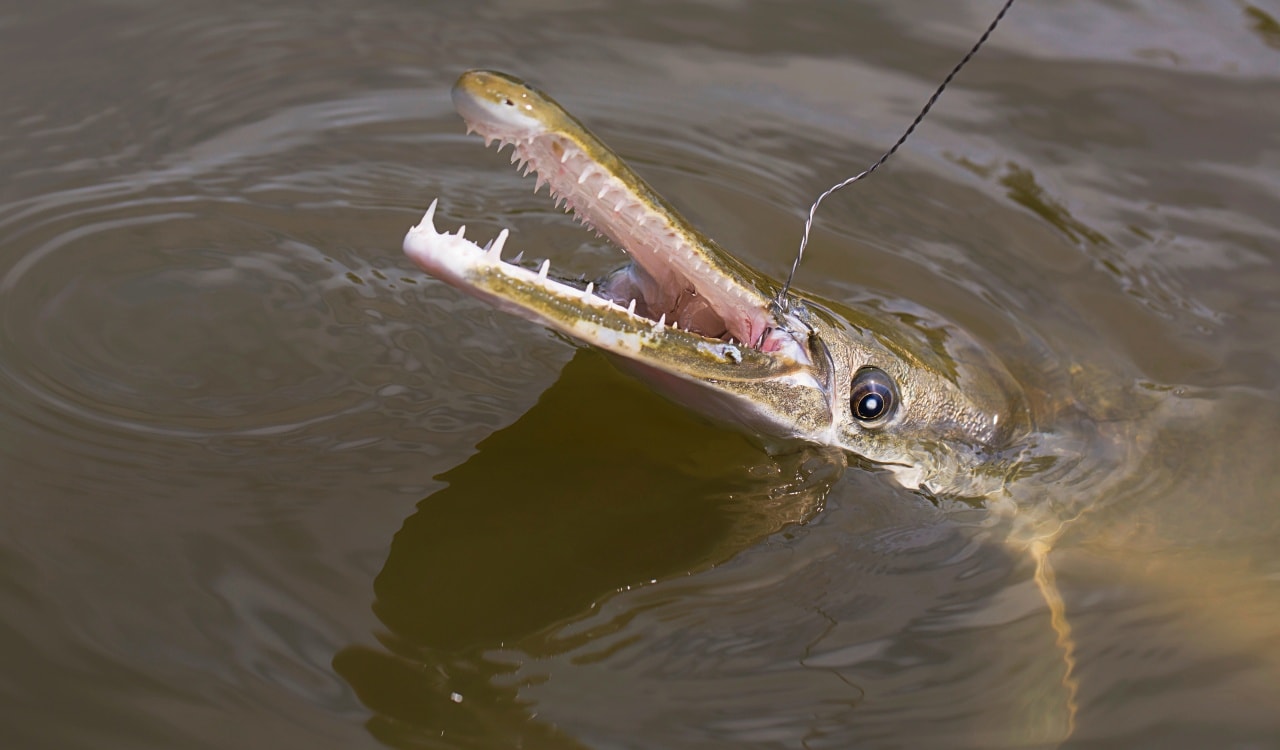
Alligator Gar
- Discovered: 1803
- Location: North America
The Alligator Gar looks, to many, like a living fossil. It happens to be the largest freshwater fish of any kind in North America today. It is one of the few fish species to retain primitive morphological characteristics that have gone unchanged for millions of years. The “gar” species actually goes back 100 million years, so to change only slightly in that time is amazing. In fact, the alligator gar happens to have a spiral valve intestine, the same digestive system sharks utilize.
It’s likely that this was left-over from when the species was far larger. This species is also able to breathe in and out of the water too. On top of its facial resemblance to alligators, this similarity is also pretty crazy to see. The alligator gar cannot just walk in and out of the water, but it does have large, sharp teeth and can grow up to ten feet! If that is not enough, the species also have ganoid scales. These scales are bone-like with serrated edging, making even getting close to one dangerous.
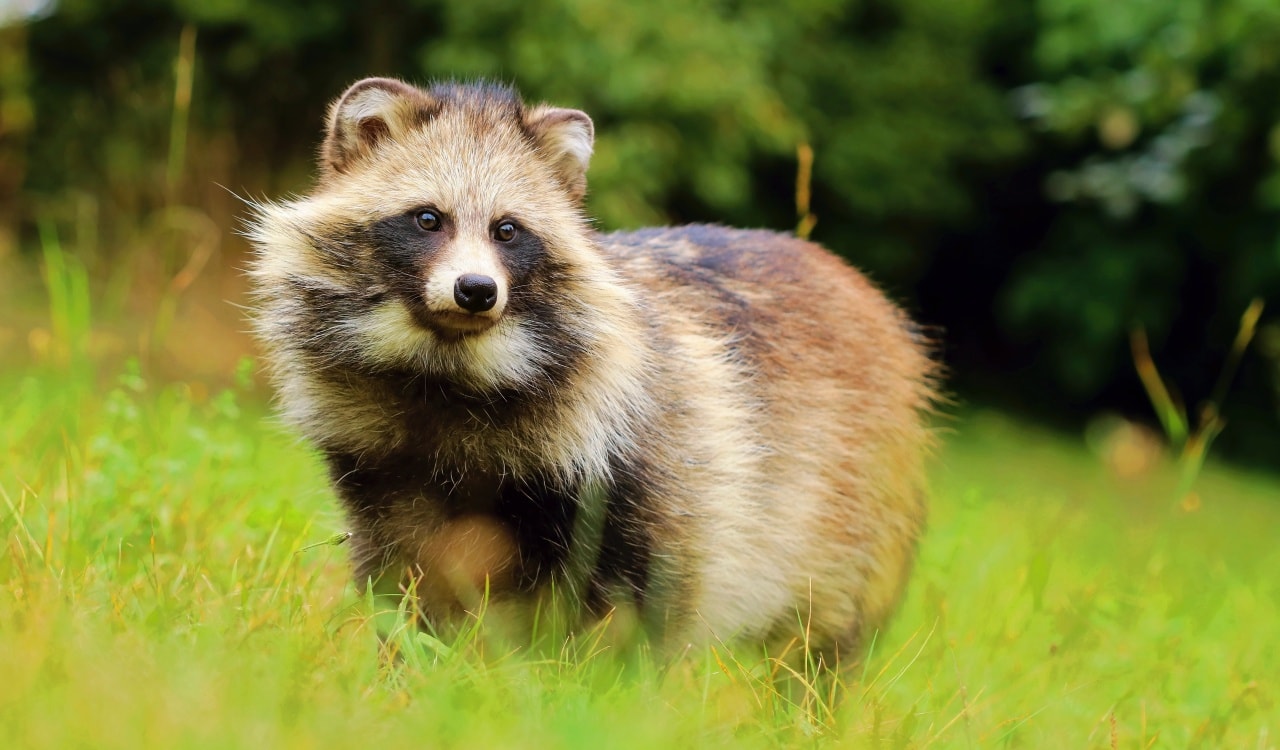
Raccoon Dog
- Discovered: Roughly 11,000 Years Ago In Japan
- Location: East Asia (Sometimes Small Areas In Europe)
It is not hard to see how the Racoon Dog received its name. Yet we knew of the species likely as long as we knew about its namesake. In spite of the “dog” name it holds, the species is most closely related to true foxes. In fact, they have a lot of the same tendencies as many North American foxes. Due to how unique the species is in look, it became a popular species to utilize in the European fur trade. That is why so many ended up in Europe when they weren’t native to it.
That is also likely how it ended up with the “raccoon dog” name. People who had never seen this animal before finally did and assumed it was related to the raccoon. It is also roughly the same size as one too. Of course, its introduction to Europe made it an invasive species. One very unique thing about the species beyond its fur is that the raccoon dog is the only living canid that hybernates during the year. The raccoon dog truly is one of the most unique animals in the world today.
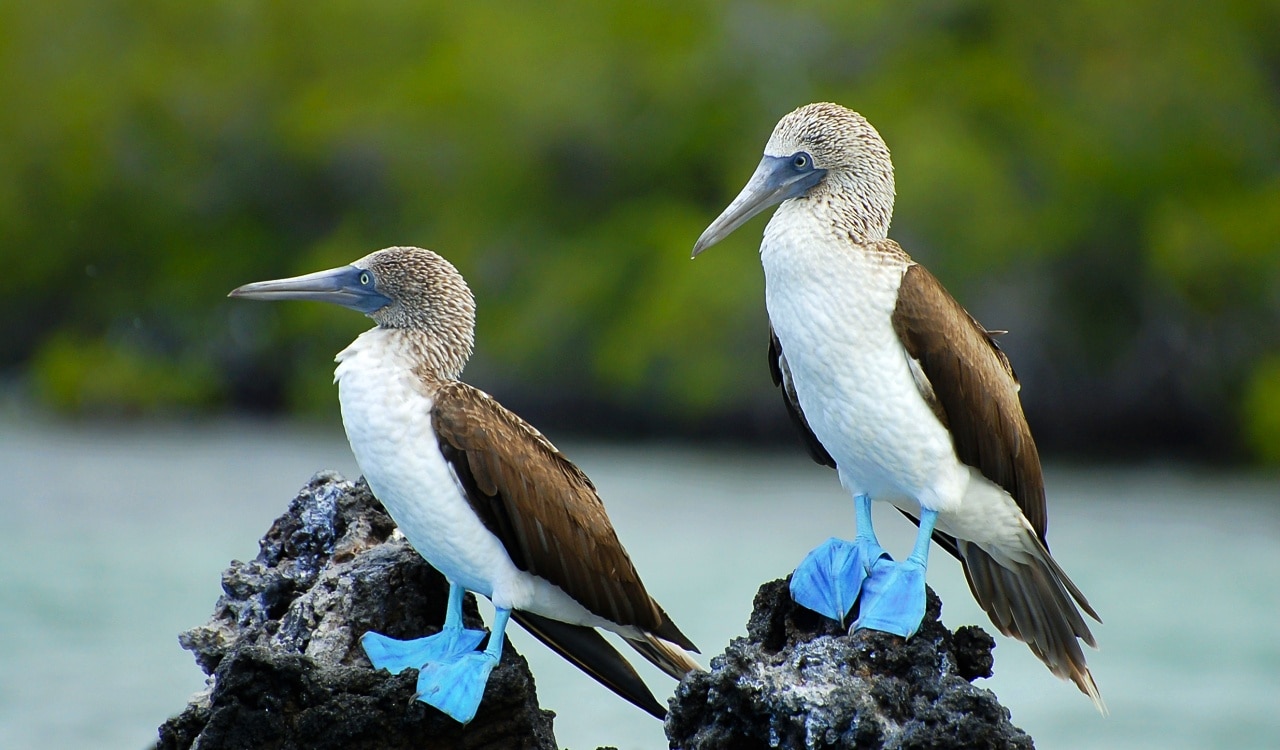
Blue-Footed Booby
- Discovered: 1882
- Location: Regions Of Eastern Pacific Ocean
If you want to check out one of the most unique animals on the planet, it is hard to overlook the Blue-Footed Booby. We know, funny name. Get out the laughs now. Ironically, the booby bird species has quite a foot fetish. We’re serious, and the type of feet one has will determine the mates it will attract. The blue-footed version happens to be one of six species in the Sula genus or boobies species. Of course, this specific species is obviously known for having bright blue feet.
The feet are used as a form of sexual selection, so the males have an entire ritual to attract females. The ritual consists of various concepts meant to display their foot prowess. First, they lift them up and down before strutting before the female, as if the females entered a club they never wanted to be in. A true “booby trap,” if you will. Interestingly, males are smaller than females in this species. The ladies get up to around 35 inches long and possess a wingspan of up to 5 feet!
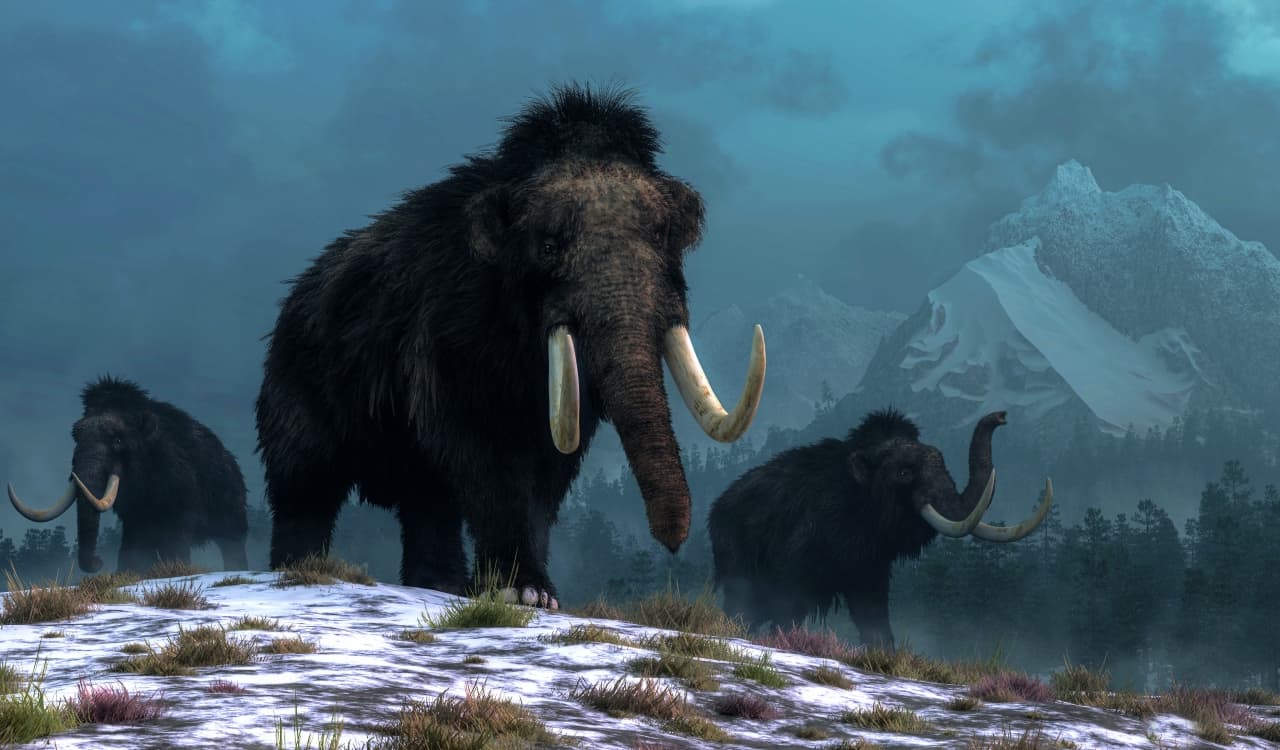
Woolly Mammoth
- Discovered: Late 1700s (Fossil Record Traced Them Back 800,000 Years)
- Location: Northern Europe & North America
The Woolly Mammoth is obviously closely related to modern-day elephants. They were very similar in most categories. The species was large, had trunks, and even tusks it would use for numerous means. The key separation is that their bodies were covered in hair. To be fair, all elephants are covered in hair. We simply cannot see it and it is much lighter. Mammoths had thick, coarse hair that even humans saw as valuable. Some early human clothing utilized this hair, in fact.
Mammoths were said to have gone extinct in the late quaternary period a little over 11,000 years ago. However, we were only judging this based on finding most fossils in Siberia and other northern territories. We did not consider islands the species could have navigated to. Thus, when fossils were discovered on St. Paul Island, we concluded Mammoths lived there up to 5,600 years ago. Meanwhile, those found on Wrangel Island trace them back as soon as 4,000 years ago.
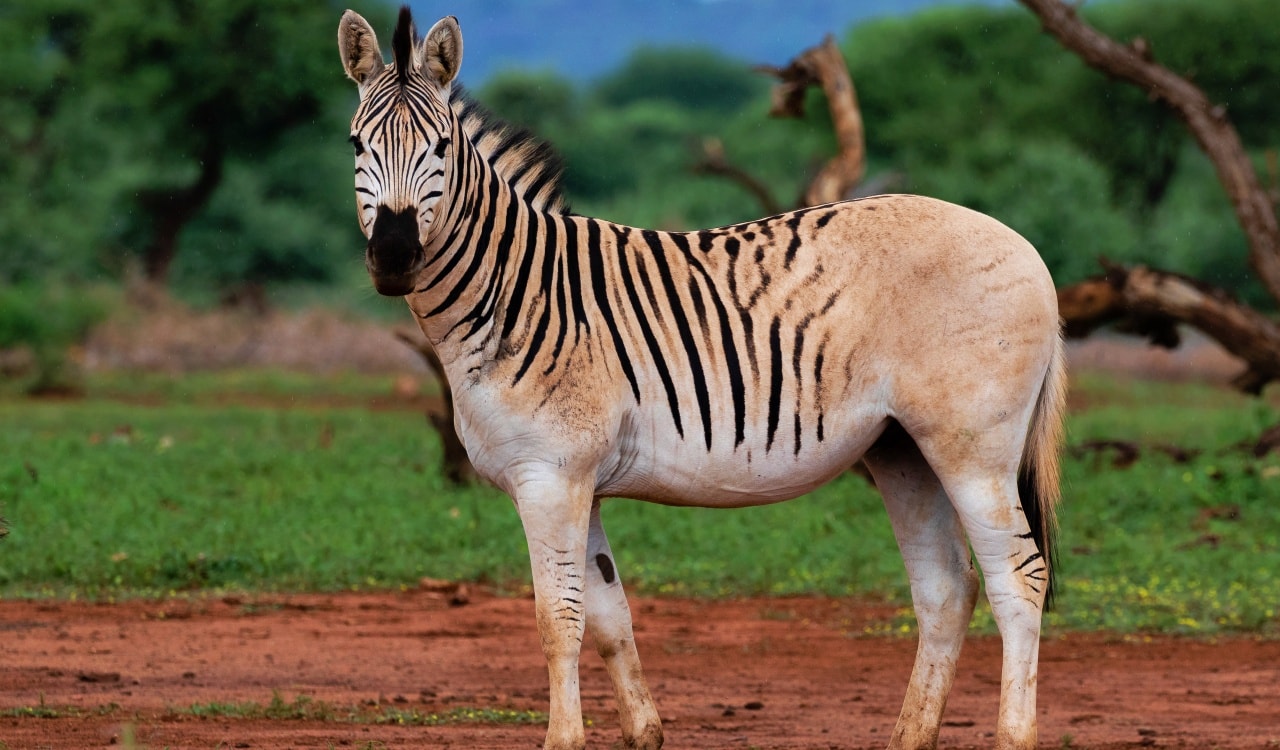
Quagga
- Discovered: 1778
- Location: Southern Africa
The Quagga species happens to be extinct today, mostly due to humans. However, it was thought to be one of the most unique animals around due to its appearance. It’s a species of plains zebra that lived mostly in South Africa. The species finally went extinct by the 19th century (1883) when European settler-colonists killed the last of the species. While it is a type of Zebra, the appearance of quaggas might make you assume it’s a hybrid species.
They had the standard white and black zebra pattern around the front section of the body. Meanwhile, it drifts into brown and white stripes as you get further into the middle. By the time you reach its rear section, the quagga is only brown without any stripes. This was the average but things could look slightly different. This could be why some assumed zebras mated with horses to get the quagga. The species could get pretty big too. Quaggas were around 8.5 ft long and up to 4.5ft tall.

Aardwolf
- Discovered: 1783
- Location: Eastern & Southern Africa
The Aardwolf, contrary to its name, has no real relation to the wolf species. In fact, its closest related cousin happens to be the African Hyena. In fact, many have resorted to calling it more of a jackal. But unlike other species around its size, the aardwolf actually does not hunt down other animals. Rather, it chooses to eat insects and their larvae. The species really enjoys eating termites the most. It is said that just one aardwolf can consume up to 250,000 termites in a single meal.
The tongue of an aardwolf can be compared to the snout of an anteater. It is long and sticky and capable of folding up to fit into tight areas. That makes it perfect for lapping up insects without having to dig very much. In fact, the tongue has evolved to be able to do this while withstanding bites from insects, especially the strong termite bite. The species is not easy to find due to being nocturnal, as it mostly rests in burrows during the day. However, they are truly beautiful creatures.
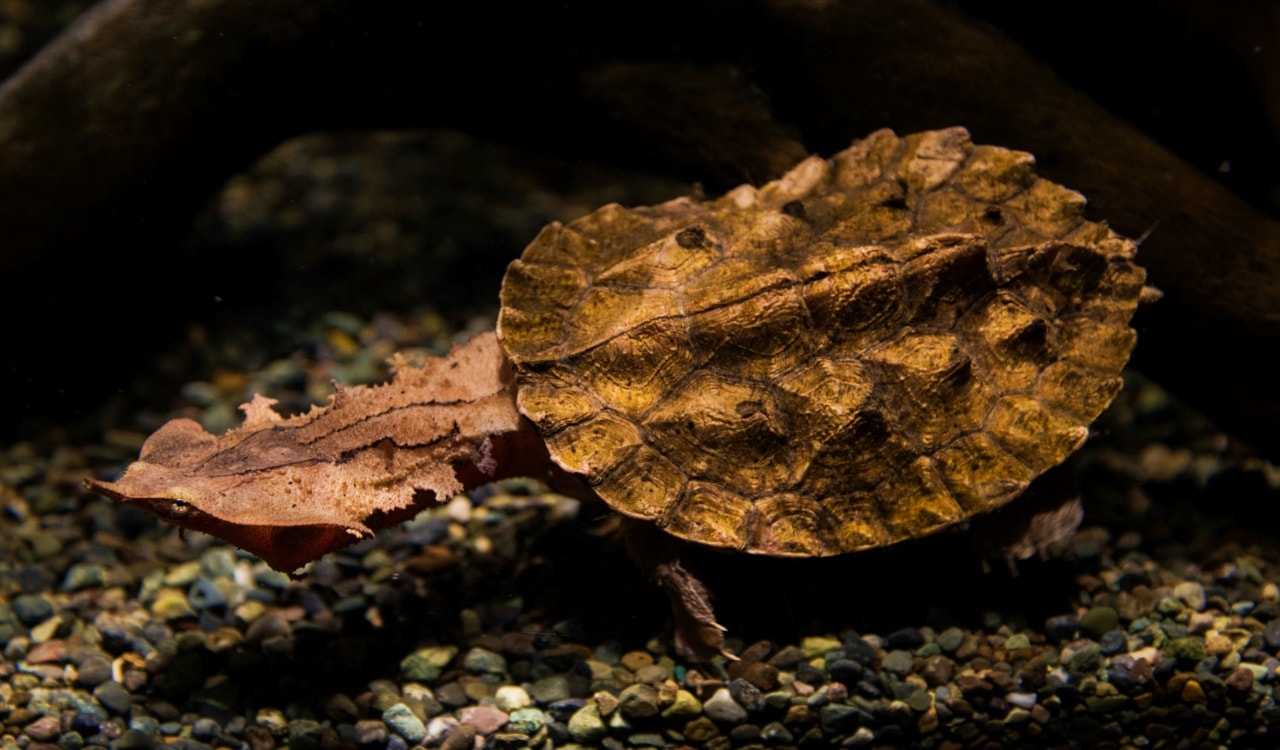
Mata Mata
- Discovered: 1741
- Location: South America
Not to be confused with the town of Matamata in New Zealand, the Mata Mata happens to be a freshwater turtle species. They are found in South America, mostly around the Amazon. Due to the many animals in this region, turtles likely would not stand much of a chance. This is why the species evolved to try and adapt to what it might face. As you can tell, this turtle has a very different shell compared to other turtle species you might see elsewhere. This is used for camouflage as well as defense.
It has what seems to be sharp spikes coming out of the shell. Yet it also has a triangular, flattened head with tubercles and flaps of skin. The Mata Mata species even have a horn on its snout along with three barrels on the chin, with four additional barbels around the upper jaw. None of these are hooked or notched, but they can be useful for defense. Most of these turtles do not get massive, but they can reach around 37 inches in length and weigh up to roughly 50lbs.
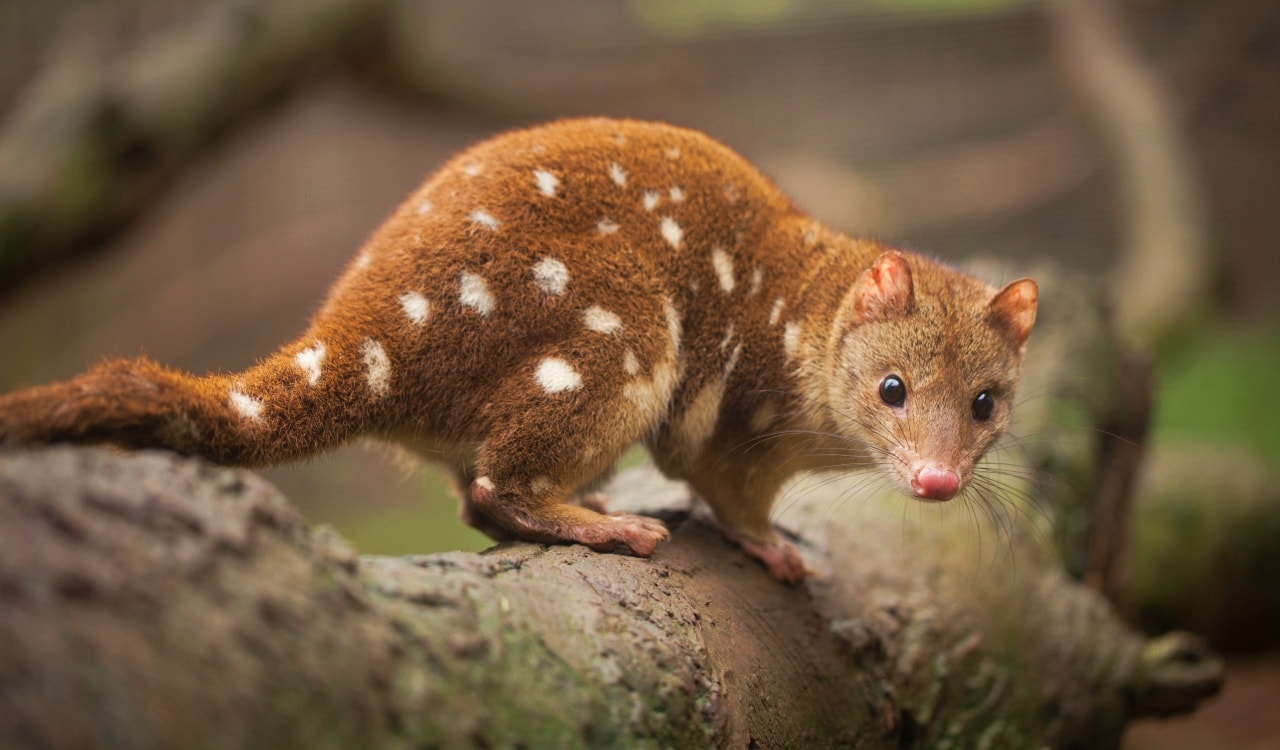
Quoll
- Discovered: 1770
- Location: Australia, Tasmania, & New Guinea
The Quoll is thought to be an adorable species on the surface by those who see them. It is hard to disagree, but they are a lot like their cousin, the Tasmanian Devil. Of course, this is a carnivorous marsupial, one of the few still living today. While the ancestor to the species was a good bit larger 15 million years ago, as with most species that survived this long, the quoll ended up being smaller. Today, they do still vary in size but they are still quite small. They can weigh between 11 ounces to 15 pounds, which is quite a separation in size.
The species is nocturnal and relatively solitary. Yet mating does take place in the wild during winter periods. Females usually have nearly 20 pups but sadly the mother only has six teats to feed her young and those are the ones that tend to survive. When Europeans began to colonize Australia, the quoll began to decline in number. It could be due to competition in food or simply being killed off by hunters. In fact, the eastern quoll is extinct in mainland Australia today. Overall, the quoll is one of the most unique animals roaming the Australian region. Sadly, they are declining heavily in number so breeding programs have been put in place to secure their survival.
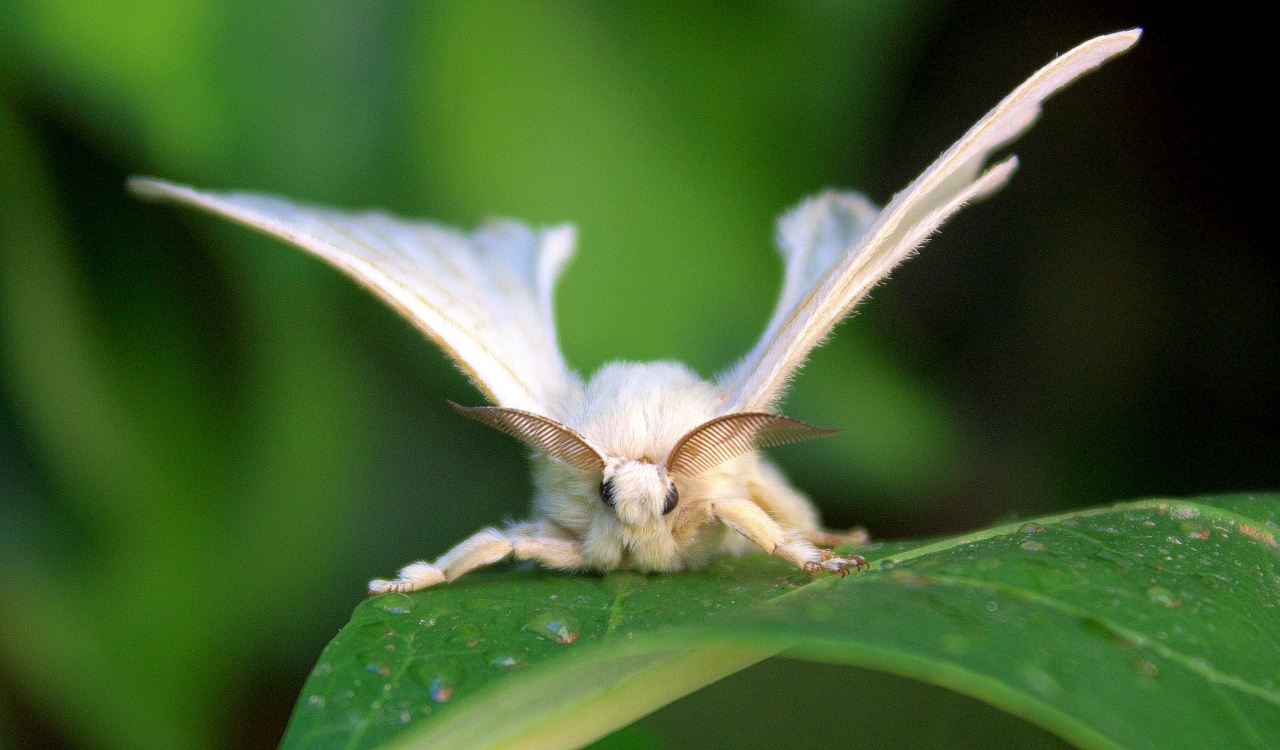
Venezuelan Poodle Moth
- Discovered: 2009
- Location: Venezuela
We’ll give you one guess where you can find this species. Hint: it starts with a “V.” This species truly does get its name honestly. Yes, it is from Venezuela in South America but it also certainly does look like both a moth and poodle all rolled into one. As you can tell by the images of the species, it is pretty weird looking and unlike anything that you have likely seen before. To us, that makes it one of the most unique animals in the world. We actually did not really know the species existed in the larger scientific community until 2009.
That was when Kyrgyzstani zoologist Dr. Arthur Anker took a trip to the Canaima National Park in Venezuela. He took over 70 images of the moth, and would later publish the photos for the scientific community to see. A lot more studies need to take place before we can know more about the species. Yet from what has been discovered, most of these moths only get to 2.5 centimeters in length. Many now feel like the images were part of an elaborate hoax, especially since the moth has yet to be spotted again by those who went to the same location as Dr. Anker. Time will tell, of course.
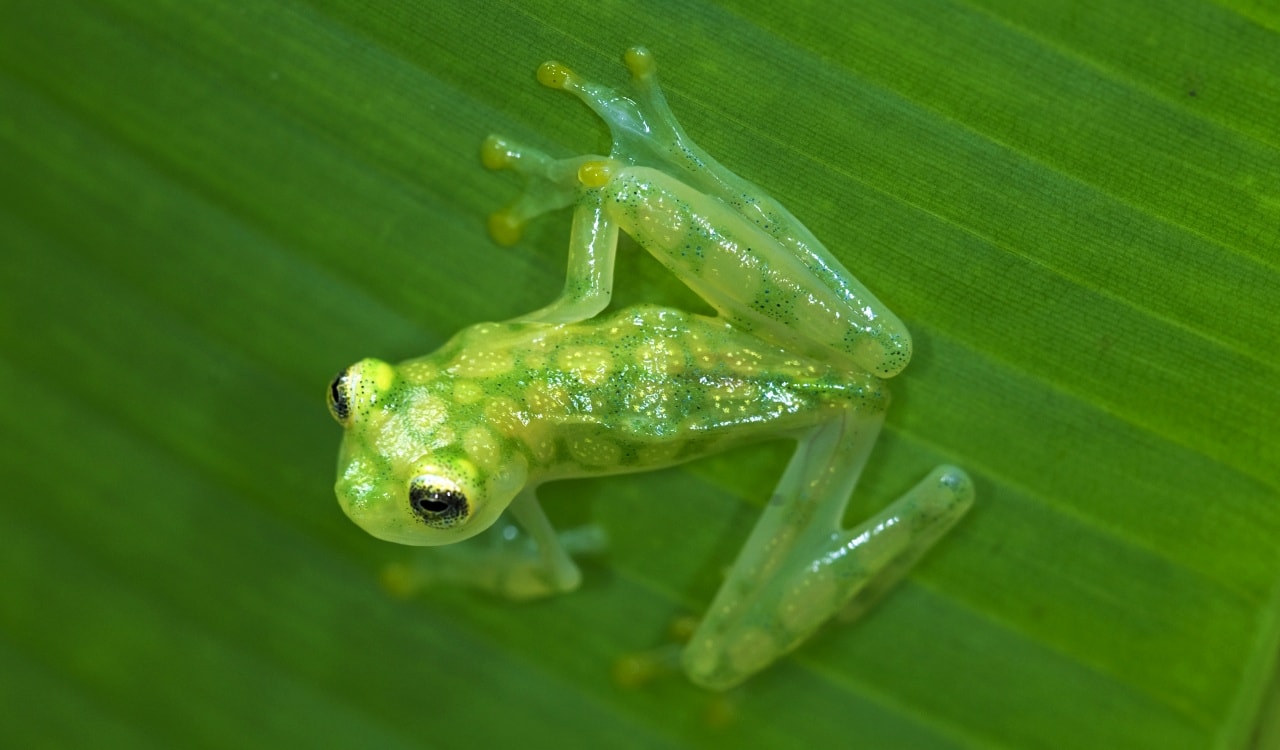
Glass Frog
- Discovered: 1872
- Location: South America
We have actually referenced the infamous Glass Frog before on Science Sensei. However, it is clear that this is one of the most unique animals on the planet and is well-worth discussing again. The frog gets its name in a pretty obvious way. While the general coloring of this frog is usually lime green, its abdominal skin is often transparent or translucent. The version of that varies, however. The frog’s insides can be seen due to this abnormal situation it goes through. You can easily see the internal viscera. That includes the heart, liver, and entire gastrointestinal tract.
Interestingly, while frogs are amphibians and usually close to a water source, glass frogs differ. You’ll actually see them living and hanging out in the trees, which is probably a good thing. A LOT of predators would grab them if they were on the ground as often as other frogs. The species is from South America, yet unlike other frogs from this region, this species does not have a toxin or anything to protect it on the ground. They will come out of the trees during the mating season though. Like humans, the species will risk its life just to brag to its friends about that one time that never really happened the way they claimed it did.
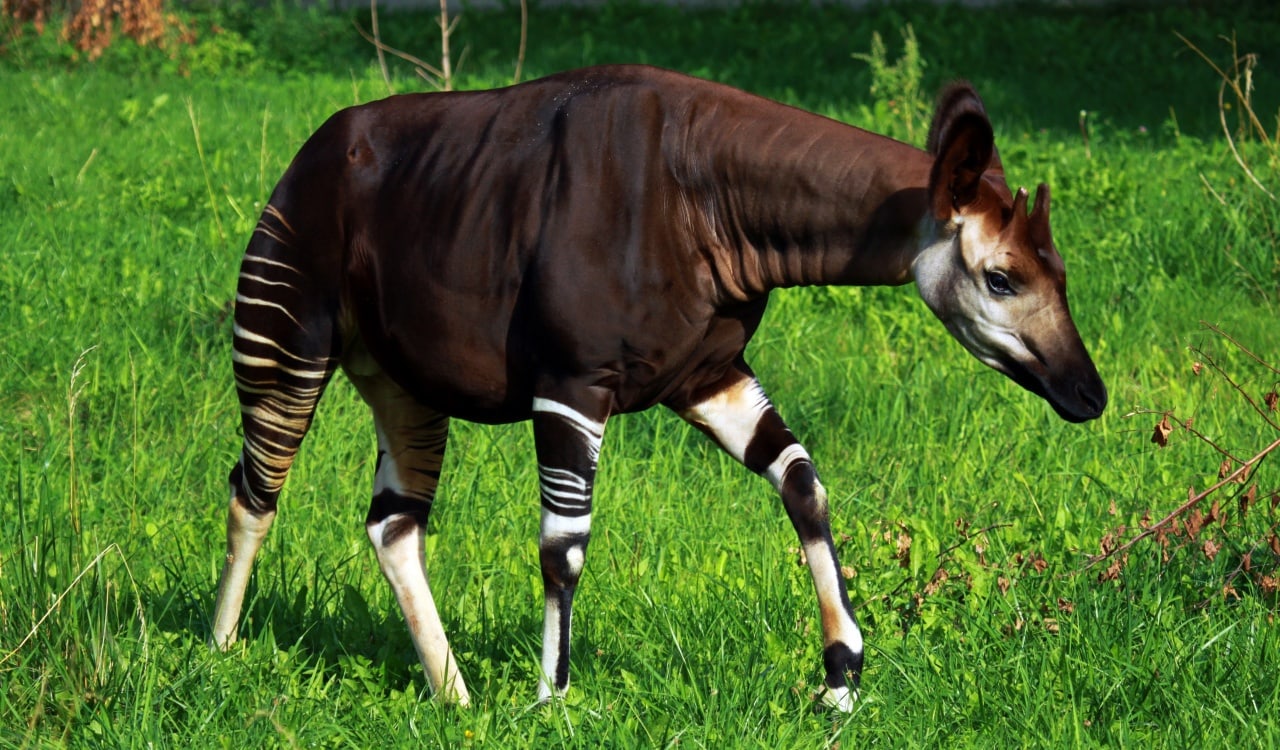
Okapi
- Discovered: 5th Century BCE
- Location: The Democratic Republic of the Congo
The Okapi is a hard animal to ever spot in the wild. The species is most active during the day but usually travels around on its own. The exception to this rule is during mating season. Pregnancy for female okapi is quite long. It takes up to 450 days for a single calf to be born. To avoid issues with predators, the mothers will keep the calf in hiding for up to 6 months. Which only makes it tougher to spot one. First, they are only found in the Democratic Republic of the Congo. Due to this, it’s hard to enter this territory most of the time for pretty much anyone. Second, their decision to travel solo makes it far easier for them to hide.
Yet their appearance is hard to miss. They look a lot like zebras due to their white horizontal stripes. However, they also have rings on their legs too. The overall body is usually between chocolate and reddish-brown. The males have short horn-like protuberances on their heads yet the females possess hair whorls while lacking horns. The species might favor zebras in a way, but their closest relative is actually the giraffe. While they do not get as large, okapi can get up to 5 feet tall with a length of a little over 8 feet. They can weigh between 440 to 770lbs too! They also have long necks as well.
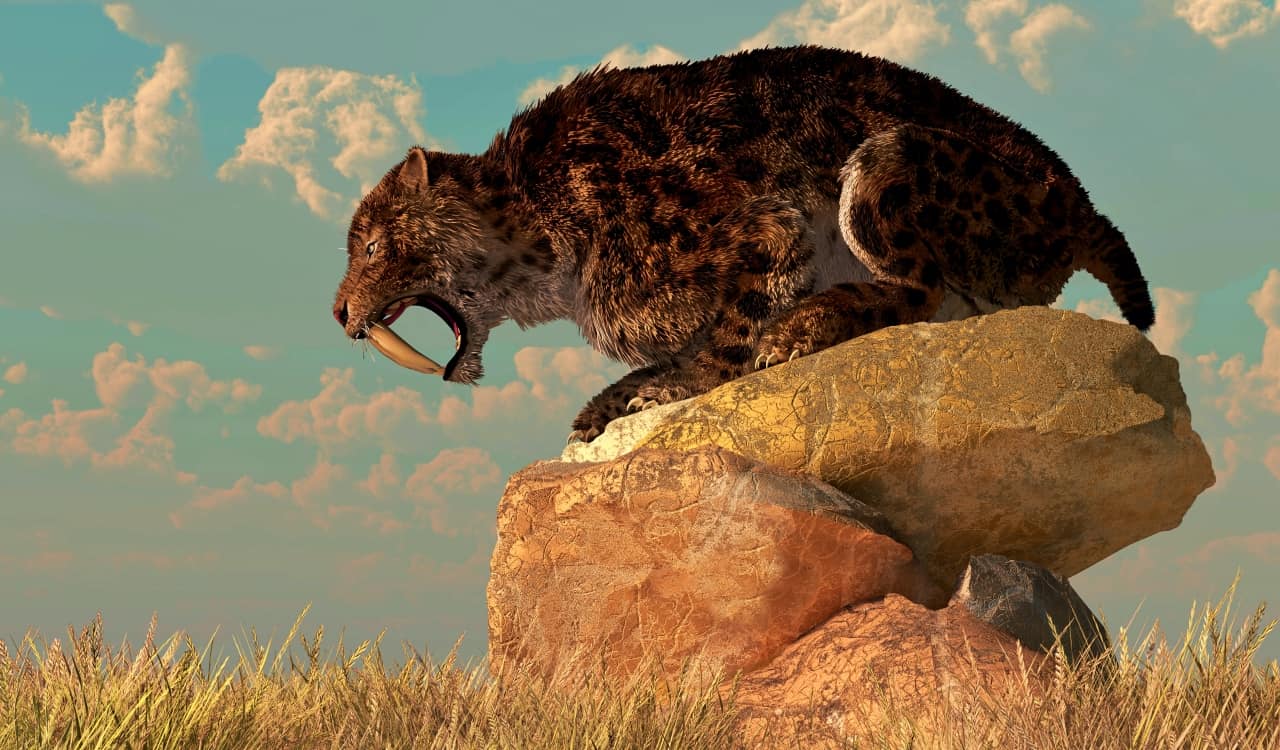
Smilodon
- Discovered: Technically The 1830s
- Location: Extinct (Lived In North & South America)
The Smilodon might be known best by its incorrect nickname, the saber-toothed tiger. When fossils were discovered starting in the 1830s, it was easy to see why so many could assume it was a tiger. It appeared to be large just like most of the Panthera species we see today. The species also had two large fangs that actually stuck out of its mouth. These were likely not even needed, as the smilodon had large razor-sharp teeth beyond the fangs. The similarities made it hard to assume it was not some sort of prehistoric cat. However, as more evidence came through, scientists found it was more robust in its body than any cat during or before its time.
That made the scientific community research into the species more. This led to the groundbreaking discovery that this was no cat but rather, it was a carnivorous marsupial. The discovery was easier to make since we had so much information about other carnivorous marsupials still living today, which it seemed to have more in common with. All Smilodon died out around 10,000 years ago, the same time most other megafauna died off. The reasoning was not just climate-related but, rather, due to its reliance on large animals for food. As those animals died off, the smilodon ran out of viable food sources and slowly met its demise.
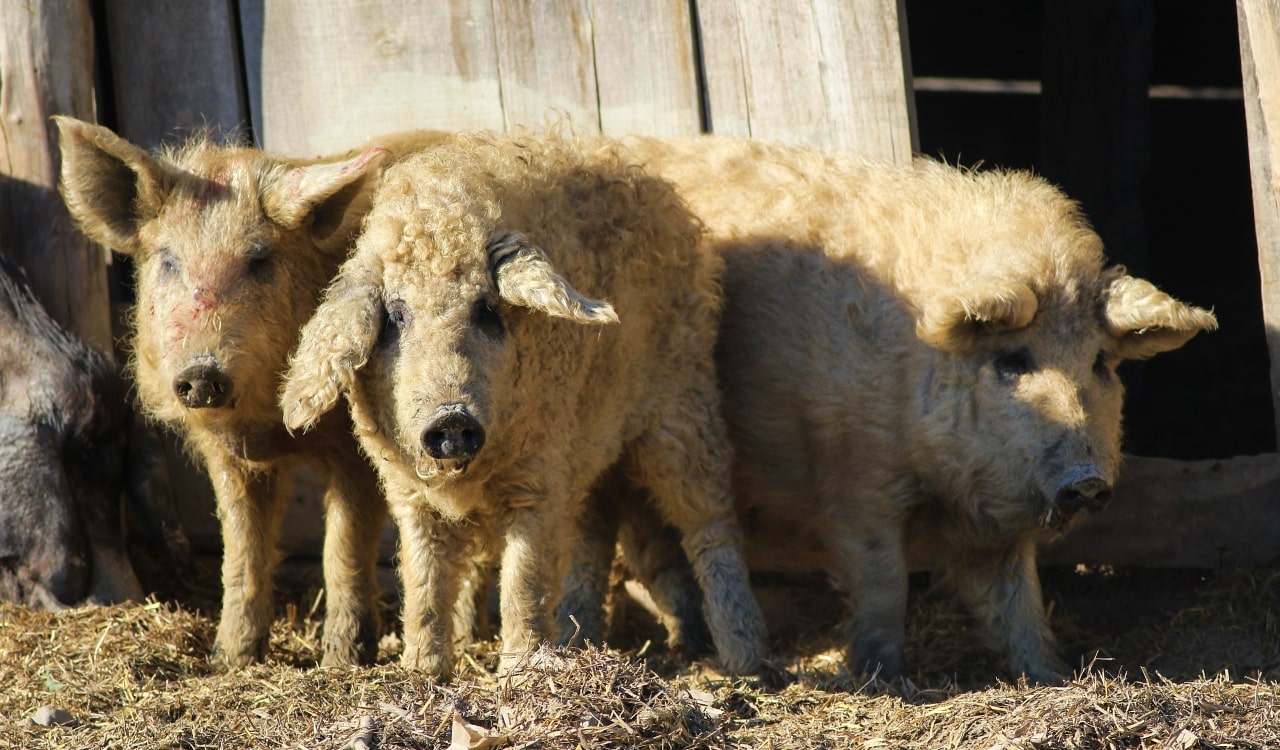
Mangalitsa Pig
- Discovered: Wasn’t, As It Was Created
- Location: Europe
The Mangalitsa Pig is certainly one of the most unique animals around, especially when it comes to the overall pig species. The reasoning for this might be obvious to see. Our pig friend here is covered in hair, unlike any other pig species. How did this happen? The story goes that in the 1830s, Austria-Hungary Prince of Serbia Miloš Obrenović wanted to cross-breed a European wild boar with a Serbian breed. He sent off 12 pigs to do this, 10 of them being sows and the other two being boars. The pigs were initially sent to the Prince’s farm near Belgrade. That was where the black Mangalista version of the species was created.
However, the Prince eventually sent the pigs to Archduke Joseph, who was the Palatine of Hungary at the time. That was officially the estate where the new breed of the Magalista Pig was created. Why was this cross-breeding done? Apparently, it was assumed that the pig would become larger and carry more fat. That turned out to be true, as it’s up to 70% fat. The species was initially formed by breeding Hungarian pigs from Nagyzalonta and Bakony with the European and Serbian Šumadija wild boars. The only other pig species to have a coat of hair like this species was the now-extinct Lincolnshire Curly Coat pig native to England.
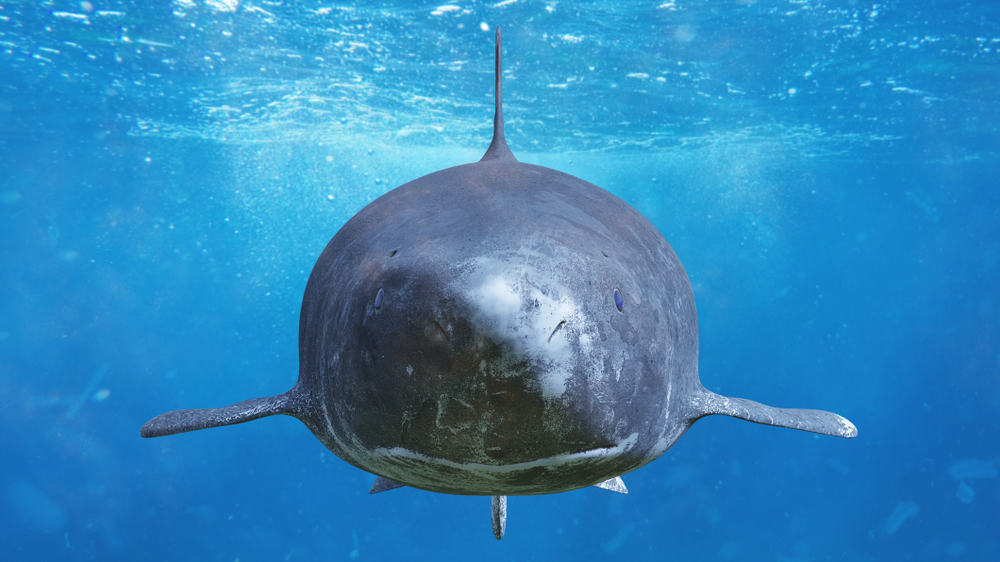
Greenland Shark
- Discovered: Unknown (Estimated To Be The 1200s)
- Location: Northern Arctic Waters
The Greenland Shark is certainly one of the most unique animals on the planet. They have the distinction of being one of the longest living creatures on the planet today, with an average lifespan of between 250 to 500 years! They are also one of the largest sharks still living today. They’ll get to around 21 feet long and weigh around a ton, literally! As you might have guessed by its name, these sharks tend to be found in the waters of Greenland. But you can also find them in many other colder or arctic waters.
The natives of Iceland and Greenland tend to enjoy eating this type of shark, as it is considered a delicacy. The real problem with this is that the shark had to adapt to live at lower depths over long periods of time. To do this, it developed a high concentration of trimethylamine N-oxide in its tissues. That causes its meat to be toxic to humans, but it is also toxic to other animals that could possibly even try to prey on it. This makes the Greenland Shark relatively untouchable, on top of the fact that it is incredibly large. For humans to eat it, they have to reduce the toxin levels, which can take a while sometimes.
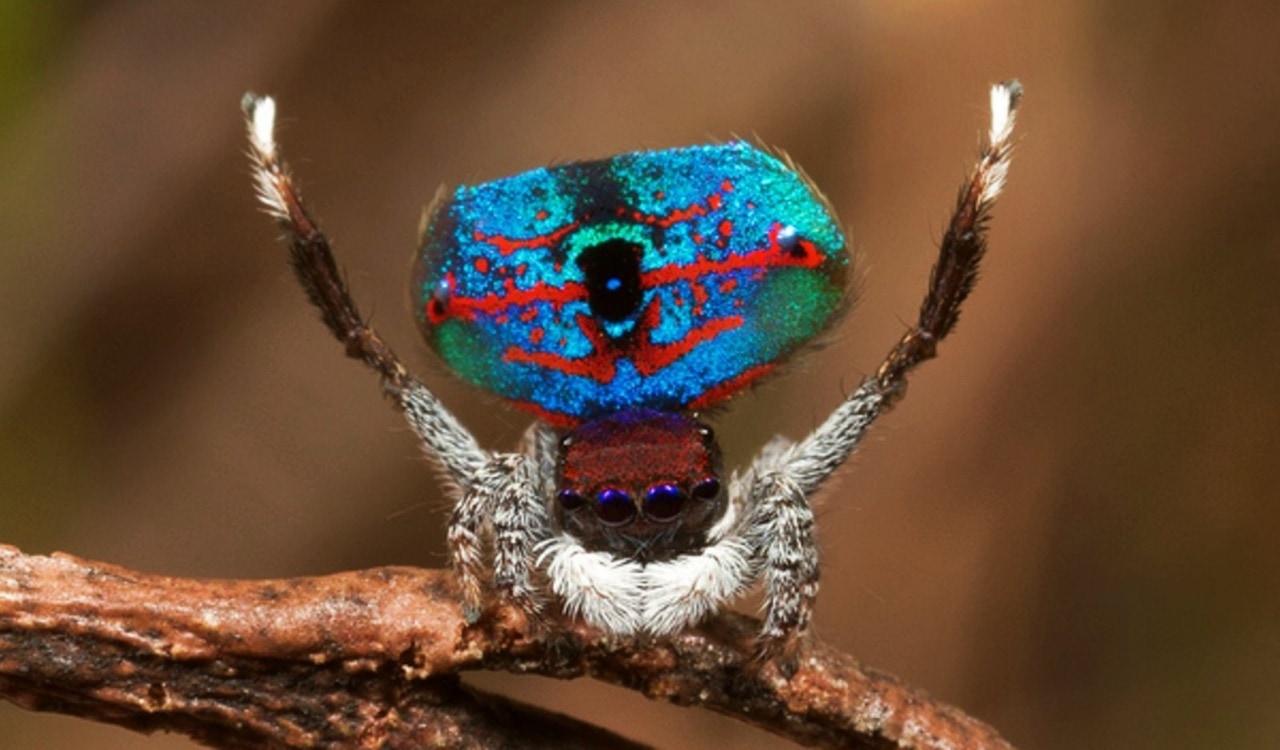
Sparklemuffin Spider
- Discovered: 2015
- Location: Australia
The fearsomely named Sparklemuffin Spider has somehow become a beloved species as of late. Clearly, it is one of the most unique animals in the world right now if not for its name, certainly its appearance. This is a type of jumping spider or “peacock spider,” and is really only found in Australia around the Queensland area. The name truly comes from its coloration, as it certainly makes you do a doubletake when you view it. There is a difference between the coloration of males and females, which is good to remember and helps you tell them apart.
Females have a slightly colored back but the males have a very noticeable colored back. The males will have vibrant and unique patterns of color. This often reminds people of other spider types within the same family. However, what sets them apart from those other spiders is the opisthosomal flap that happens to extend and cover the opisthosomal plate. They’ll also spread those flaps as they inflate the opisthosomal plate, which will then reveal beautiful blue scales. The scales will be accompanied by transverse bands of red to orange pigmented scales. Thus giving us the unique look of the spider.
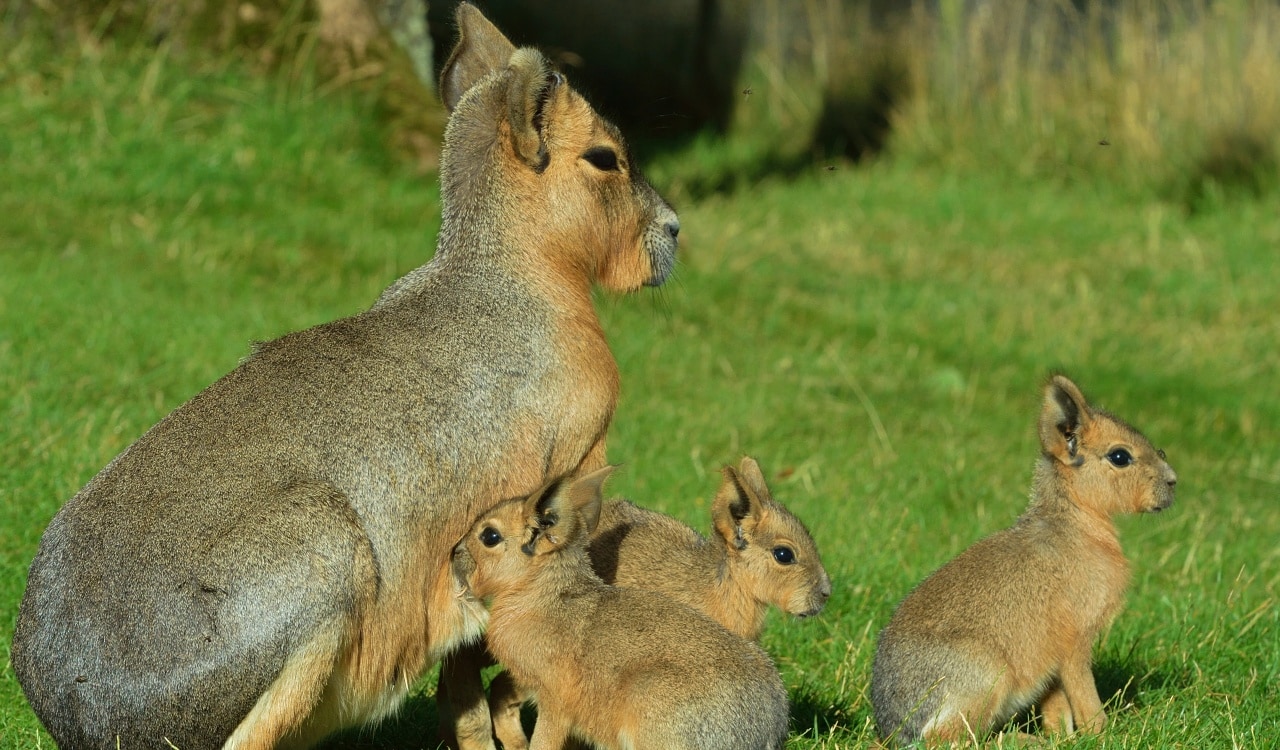
Patagonian Mara
- Discovered: 1780
- Location: Argentina & Patagonia
If you want to discuss one of the most unique animals we’ve ever discovered, one could not forget about the Patagonian Mara. The species looks a lot like a rabbit or hare when you see it at first glance. However, it is actually a large rodent species. It pretty much has the same diet as rabbits and even moves around just like one. However, it is larger and more muscular than the jackrabbit and even your average hare. Of course, you can find the species in Patagonia as well as other areas in Argentina. However, it is likely that some of these were taken across the pond to the Middle East years ago as some were spotted in the United Arab Emirates.
It is possible that they were being kept as pets and simply got out, then mated heavily. Regarding the lifestyle of the species, it happens to be completely monogamous, unlike other rodent species. Yet this might be a misnomer about it, as it will breed in the same warren but it’ll be shared by several pairs. It truly will stay with the same mate, but after their mate dies, they will move on to another like humans. Which is pretty compelling when you think about it. On top of this, the male is really responsible for maintaining the relationship as it will follow the female wherever she goes.

